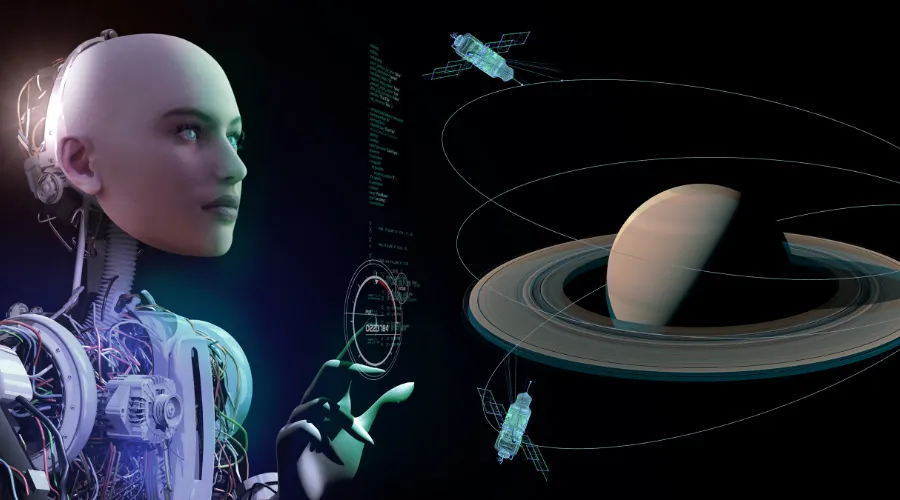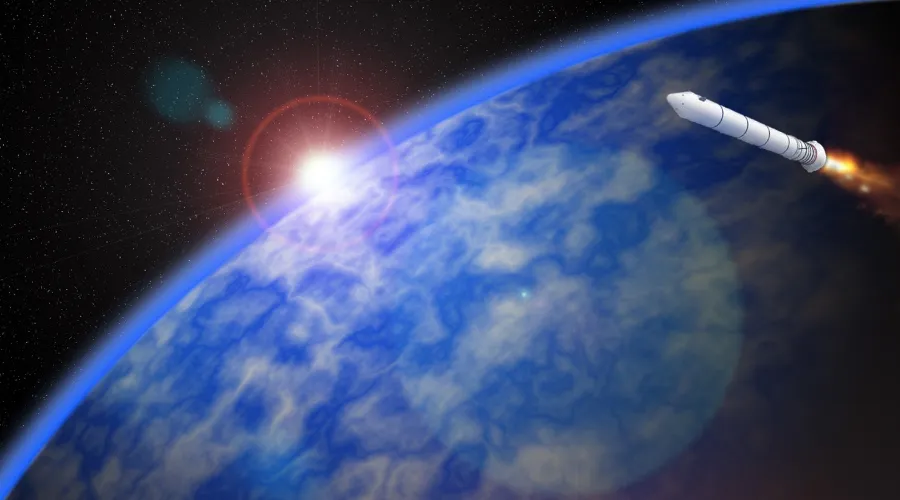How Robotic Missions Prepare the Way for Human Exploration

Robotic missions are the unsung pioneers of space exploration, paving the way for humans to venture deeper into the cosmos.
Anúncios
These sophisticated machines, from rovers to orbiters, collect critical data, test technologies, and map uncharted terrains, ensuring that future human explorers can step onto alien worlds with confidence.
But how exactly do these automated trailblazers shape the path for humanity’s boldest ambitions?
This question lies at the heart of why robotic missions are indispensable to our extraterrestrial future.
The Vanguard of Exploration
Imagine a seasoned scout navigating a perilous frontier before settlers arrive—that’s the role robotic missions play in space.
They are the first to encounter the unknown, gathering intelligence that informs every decision about human exploration.
Take NASA’s Perseverance rover, for instance, which landed on Mars in 2021.
It’s not just a rover; it’s a mobile laboratory, analyzing soil samples, studying the Martian atmosphere, and even producing oxygen from CO2.
These tasks aren’t mere scientific curiosities—they directly inform whether humans can one day live on the Red Planet.
By identifying resources like water ice or testing life-support systems, robotic missions reduce the risks astronauts will face.
Moreover, these missions are continuously evolving.
With advancements in artificial intelligence and machine learning, future robotic explorers will be capable of making autonomous decisions, enhancing their ability to adapt to unforeseen challenges in real-time.
The data these machines collect is staggering.
According to a 2023 report from NASA’s Jet Propulsion Laboratory, Perseverance has transmitted over 500 terabytes of data, including high-resolution images and chemical analyses.
This wealth of information helps scientists pinpoint safe landing zones and understand environmental hazards, like radiation levels or dust storms, that could jeopardize human missions.
Mapping the Unknown
Exploration begins with a map, and robotic missions are the cartographers of space.
Orbiters like the Lunar Reconnaissance Orbiter (LRO), launched in 2009, have created detailed topographical maps of the Moon’s surface, identifying craters, lava tubes, and potential resource deposits.
These maps are critical for planning human habitats, as they reveal stable ground for construction or areas rich in water ice for fuel and sustenance.
Unlike human explorers, robots can endure extreme conditions—radiation, vacuum, or subzero temperatures—without complaint, making them ideal for long-term reconnaissance.
Consider a hypothetical robotic mission to Europa, Jupiter’s icy moon.
A probe named AquaScout could drill through the ice to analyze subsurface oceans, transmitting data on water composition and microbial life.
This information would shape the design of human-rated submarines or habitats, ensuring astronauts are equipped to explore Europa’s alien seas.
Without such robotic precursors, sending humans would be like diving into an uncharted ocean blindfolded.
In addition to mapping, these missions also help identify potential hazards.
For example, the data collected can reveal areas prone to landslides or other geological instabilities, allowing future missions to avoid these dangers.
+ How Space Junk Threatens Future Missions and Satellites
Testing the Tools of Tomorrow
Robotic missions also serve as proving grounds for technologies humans will rely on.
From propulsion systems to radiation shields, these machines test innovations in real-world conditions.
For example, the MOXIE experiment on Perseverance successfully converted Martian CO2 into breathable oxygen—a breakthrough that could one day supply life-support systems for astronauts.
This isn’t just a technical win; it’s a step toward self-sufficiency on Mars, reducing the need to haul resources from Earth.
To illustrate, let’s envision a robotic lander, TechTrail, deployed to the Moon’s south pole in 2030.
Equipped with 3D-printing technology, it constructs a prototype habitat using lunar regolith.
By testing the process—mixing soil with binders, optimizing print speeds—TechTrail ensures the technology is ready for human crews to scale up.
These experiments are like dress rehearsals, ironing out kinks before lives are on the line.
Furthermore, the insights gained from these tests can lead to innovations that benefit life on Earth.
Technologies developed for space exploration often find applications in fields such as medicine, environmental monitoring, and disaster response.

Table 1: Key Technologies Tested by Robotic Missions
| Mission | Technology | Purpose | Outcome |
|---|---|---|---|
| Perseverance (Mars) | MOXIE | Convert CO2 to O2 | Produced 5g of oxygen per hour, viable for life support |
| TechTrail (Hypothetical) | 3D Printing | Build lunar habitats | Validated regolith-based construction for human use |
Mitigating Risks for Human Travelers
Space is unforgiving, and robotic missions act as humanity’s shield against its dangers.
By studying environments firsthand, they reveal hazards that could derail human missions.
For instance, Mars’ thin atmosphere and frequent dust storms pose risks to both equipment and astronauts.
Robotic missions like the InSight lander, which monitored Martian weather from 2018 to 2022, provided data on wind patterns and seismic activity, helping engineers design robust habitats and suits.
Radiation is another silent threat.
On Mars, cosmic rays and solar flares expose the surface to levels that could harm humans over time.
Robotic missions equipped with dosimeters measure these levels, informing the development of shielded habitats or mission timelines that minimize exposure.
By taking these risks first, robots ensure humans aren’t walking into a deadly trap.
Additionally, the data collected by these missions helps in developing emergency protocols for astronauts.
Understanding environmental conditions allows mission planners to create contingency plans for unexpected events, enhancing astronaut safety.
++ Nuclear Propulsion: Accelerating Deep Space Travel
Bridging the Gap to Human Presence
The leap from robotic to human exploration isn’t just about data—it’s about strategy.
Robotic missions inform mission architectures, from landing strategies to resource utilization.
NASA’s Artemis program, aiming to return humans to the Moon by 2026, relies heavily on data from robotic precursors like the Commercial Lunar Payload Services (CLPS).
These missions deliver instruments to test water extraction or power generation, laying the groundwork for sustainable human outposts.
Picture a relay race: robotic missions are the first runners, passing the baton of knowledge to human explorers.
Without their leg of the race, the team falters.
The VIPER rover, set to explore the Moon’s south pole in 2025, will search for volatile compounds like water ice.
Its findings will directly influence where Artemis astronauts establish their base, ensuring access to resources for drinking, fuel, or even agriculture.
Moreover, the collaboration between robotic and human missions fosters a more comprehensive understanding of extraterrestrial environments.
This synergy enhances mission success rates and prepares astronauts for the challenges they will face.
Table 2: Robotic Missions Supporting Artemis Program
| Mission | Objective | Contribution to Human Exploration | Launch Year |
|---|---|---|---|
| VIPER | Map lunar volatiles | Identify water resources for bases | 2025 |
| CLPS | Deliver payloads | Test technologies for lunar outposts | 2022–ongoing |

The Economic Argument
Robotic missions are also cost-effective scouts.
Sending humans to space is exponentially more expensive—NASA estimates a single astronaut launch costs upwards of $1 billion when factoring in training, life support, and infrastructure.
Robots, by contrast, are cheaper and reusable across multiple missions.
The Curiosity rover, operational since 2012, has cost roughly $2.7 billion over its lifetime, yet it’s provided over a decade of data that will support human missions for decades to come.
This return on investment makes robotic missions a fiscal cornerstone of exploration.
Moreover, robots can operate in environments too dangerous or impractical for early human missions.
Titan, Saturn’s methane-rich moon, is a prime candidate for robotic exploration due to its extreme cold and distance.
A drone like Dragonfly, launching in 2028, will hop across Titan’s surface, studying its chemistry and terrain.
These findings could one day guide human missions, but only after robots confirm it’s feasible.
In addition to financial savings, robotic missions also contribute to international collaboration.
Countries can share the costs and benefits of robotic missions, fostering partnerships that can lead to more ambitious exploration goals.
The Psychological Edge
Beyond the technical, robotic missions offer a psychological boost.
They inspire public support and political will for human exploration.
When rovers like Perseverance beam back images of alien landscapes, they ignite imaginations and build momentum for funding ambitious missions.
The iconic “selfie” from Curiosity in 2014 wasn’t just a photo—it was a cultural moment that reminded people why space matters.
By humanizing the cosmos, robotic missions make the case for sending humans to follow.
Yet, there’s a flip side.
Could over-reliance on robots dull our appetite for human exploration?
Some argue that machines can do the job without risking lives, but this misses the point.
Robots gather data; humans inspire and adapt.
The synergy between the two is what drives progress.
Robotic missions aren’t a replacement—they’re a foundation.
Additionally, the excitement generated by robotic missions can lead to increased interest in STEM fields among young students.
This surge in interest is crucial for developing the next generation of scientists and engineers who will lead future exploration efforts.
Challenges and Limitations
No system is flawless, and robotic missions face hurdles.
Communication delays, like the 20-minute lag between Earth and Mars, limit real-time control, requiring high autonomy.
Malfunctions, such as the Opportunity rover’s loss in a 2018 dust storm, highlight the fragility of even the toughest machines.
Yet, these setbacks teach engineers how to build better systems, refining the path for humans.
Another challenge is scope.
Robots can’t replicate human intuition or adaptability.
A geologist on Mars could spot a fossil in a split second; a rover might miss it entirely.
This limitation underscores why robotic missions are precursors, not substitutes, for human presence.
Furthermore, the development of robotic missions requires significant investment in research and technology.
This investment is essential to overcome existing limitations and enhance the capabilities of future robotic explorers.
For more insights on robotic missions and their impact, visit NASA’s official website.
The Future of Robotic Pioneers
Looking ahead, robotic missions will only grow more sophisticated.
Advances in AI and machine learning are enabling rovers to make decisions independently, navigating complex terrains or prioritizing scientific targets.
The European Space Agency’s ExoMars rover, launching in 2028, will use AI to analyze soil samples on-site, reducing reliance on Earth-based labs.
These smarter machines will accelerate the timeline for human exploration, providing richer data faster.
Hybrids of robotic and human missions are also on the horizon.
Imagine a scenario where astronauts on Mars work alongside AI-driven rovers, each complementing the other’s strengths.
Robots handle repetitive tasks like sample collection, while humans tackle complex experiments.
This partnership could redefine exploration, making it more efficient and dynamic.
As we embrace these advancements, collaboration between robotic missions and human efforts will be crucial.
Together, they will push the boundaries of what is possible in space exploration.
Conclusion
Robotic missions are the backbone of humanity’s cosmic ambitions, laying the groundwork for safe, sustainable human exploration.
They map terrains, test technologies, mitigate risks, and inspire us to reach further.
Like a lighthouse guiding ships through a storm, they illuminate the path to the stars.
As we stand on the cusp of returning to the Moon and eyeing Mars, these mechanical pioneers remind us that every great journey begins with a single, calculated step.
The data they gather, the risks they take, and the dreams they spark ensure that when humans finally set foot on distant worlds, they’ll do so with knowledge, confidence, and purpose.
